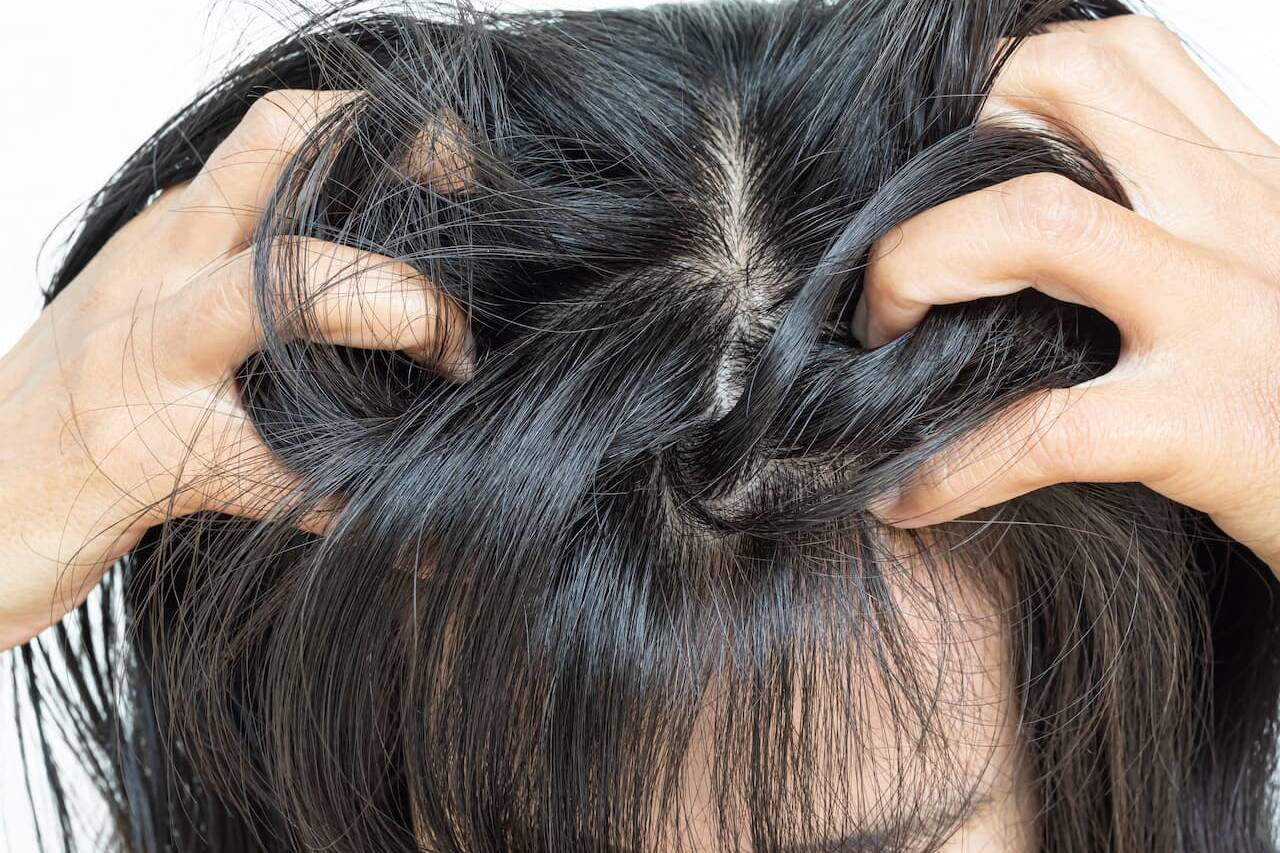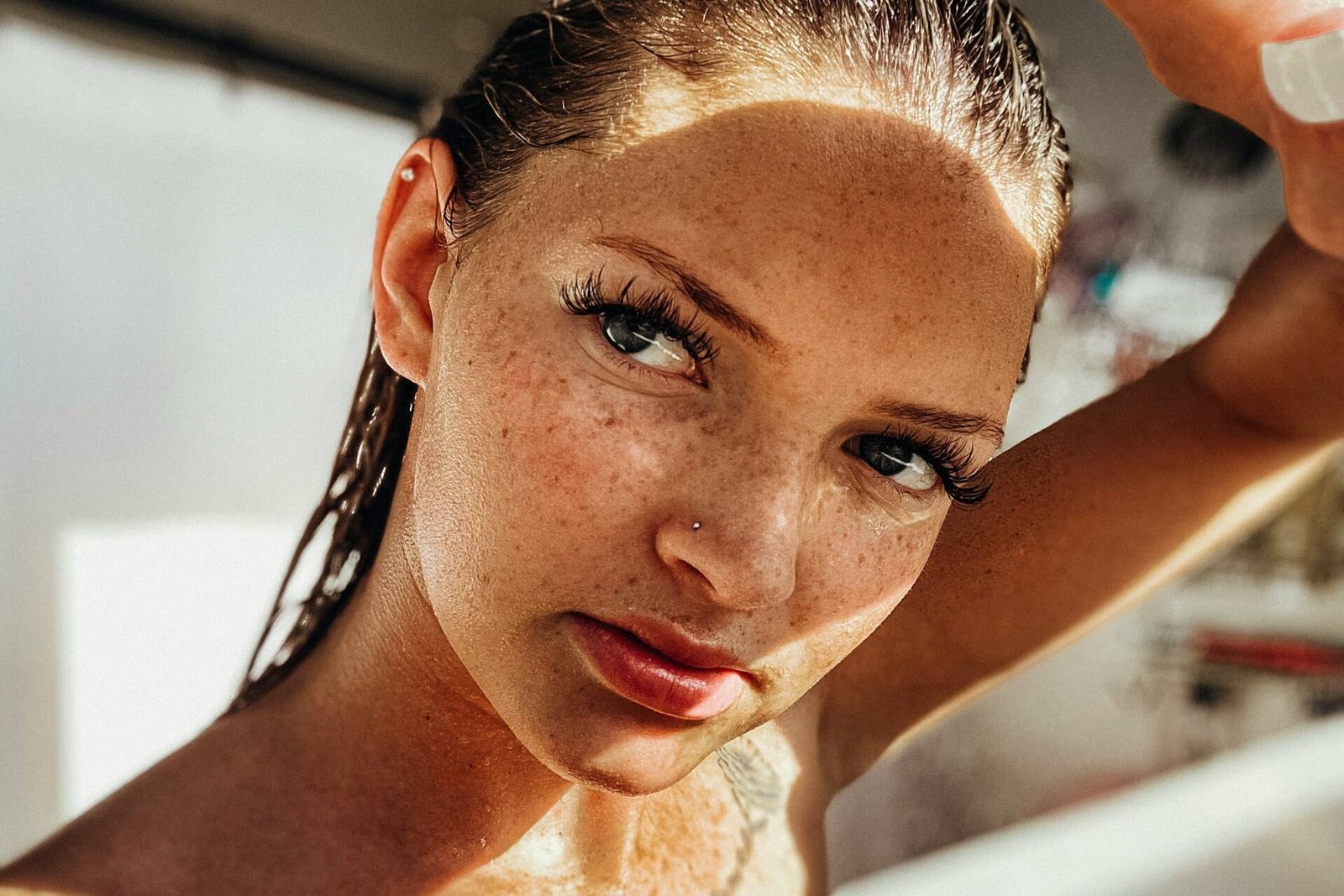Hair 101: The Basics You Need to Know
Let’s start with a quick look at what hair is actually made of. Each strand has three main parts:
- The medulla: The soft inner core (not present in all hair types)
- The cortex: The middle layer containing your hair’s natural color
- The cuticle: The outer protective layer that controls shine
The cuticle is the star of the show when it comes to shine. It’s made of overlapping cells that look like tiny roof shingles or fish scales. When these scales lie flat and tight against the hair shaft, they create a smooth surface that reflects light evenly—giving you that glass-like effect. When they’re raised or damaged, light scatters in all directions, making hair look dull.
Think of it like this: a smooth, flat lake reflects a perfect image of the sky, while a lake with ripples and waves gives only broken reflections. Your hair works the same way!
How Light and Hair Interact
Hair shine is really about how light bounces off your hair. There are two main ways this happens:
Mirror-Like Reflection vs. Scattered Light
- Mirror-like reflection: When light hits a smooth surface (like healthy hair with flat cuticles), it bounces back at the same angle—creating that high-shine, glass-like look.
- Scattered reflection: When light hits an uneven surface (like damaged hair with raised cuticles), it bounces in many different directions—creating a dull appearance.
This is why straight hair often appears shinier than curly hair—not because it’s inherently healthier, but because the light can reflect evenly along a straight surface. Each curve in curly hair creates a different angle for light to bounce from.
Hair Thickness Matters Too
Your hair’s thickness also affects how shiny it can look:
- Fine hair: Can look super shiny when healthy because it lies flatter
- Medium hair: Often has the best balance for light reflection
- Thick hair: Has more surface area for potential shine but might naturally have more texture
5 Factors That Determine Your Hair’s Natural Shine
While products can definitely help, these natural factors play a huge role in how shiny your hair can be:
1. Porosity: How Your Hair Absorbs Moisture
Hair porosity—how easily your hair absorbs and holds onto moisture—directly impacts shine:
- Low porosity hair: Cuticles lie very flat and tight, creating naturally reflective surfaces (but sometimes making it hard for moisture to get in)
- Medium porosity hair: The sweet spot for moisture and shine
- High porosity hair: Cuticles are more raised with gaps between them, making light scatter instead of reflect
Your porosity is partly genetic but can change with chemical processing, heat styling, and sun damage.
2. Hair Color: Natural and Dyed
The pigment in your hair affects how it reflects light:
- Darker hair: Usually appears shinier because the dark pigment creates more contrast with reflected light
- Lighter hair: May appear less shiny even when it’s equally healthy
- Freshly colored hair: Often looks extra shiny because the color is evenly distributed and the coloring process temporarily smooths the cuticle
This is why newly-colored dark hair often looks exceptionally glossy!
3. Hair Type and Texture
Different hair types have different cuticle structures:
- Asian hair: Often has more layers of cuticle (up to 12) that lie very flat, which is why many Asian hair types have that natural glass-like shine
- Caucasian hair: Typically has 5-7 layers of cuticle with moderate alignment
- African hair: Often has fewer cuticle layers with natural lifting due to the spiral structure
These differences help explain why some people seem to have naturally glass-like hair without much effort.
4. Your Scalp’s Natural Oils
The natural oils your scalp produces play a big role in shine:
- Just-right oil production: Creates a thin, natural coating that enhances shine
- Too much oil: Makes hair look greasy rather than glossy
- Too little oil: Leaves hair looking dry and dull
This is why brushing with a natural bristle brush can improve shine—it helps distribute oils from your scalp along the length of your hair.
5. Your Hair’s Environmental Exposure
Your everyday environment and styling habits affect shine:
- Sun exposure: Breaks down the protein in hair and roughens the cuticle
- Heat styling: Can raise and damage cuticles when used too often or too hot
- Chemical treatments: Permanently change cuticle structure
- Hard water: Leaves mineral deposits that block light reflection
Every time you color, bleach, perm, or relax your hair, you’re altering the cuticle structure. This doesn’t mean you can’t achieve glass-like hair with treated hair—you just need the right products.
Ingredients That Actually Create Glass-Like Shine
Not all “shine-enhancing” products are created equal. Here’s what really works and why:
Cuticle-Smoothing Superstars
These ingredients physically smooth and seal the cuticle for better light reflection:
- Wheat Protein: Acts like a temporary patch for damaged cuticles. It fills in gaps and rough spots, creating a smoother surface for light to bounce off. Glass Effect Shampoo and Conditioner contain this powerful ingredient that doesn’t just mask damage—it temporarily repairs it at a microscopic level.
- Natural oils: Fill spaces between raised cuticle scales, increasing the reflective surface. Think of it like filling in cracks in a mirror.
- Silicones: Create a smooth coating that enhances reflection, though they don’t repair the underlying issues.
pH Balancers
The acidity or alkalinity of your hair products directly affects your cuticles:
- Slightly acidic products (pH 4.5-5.5): Help cuticles lie flat against the hair shaft
- Alkaline products (pH above 7): Cause cuticles to raise and create dullness
The ideal pH for maximum shine is between 4.5 and 5.5. This slightly acidic environment keeps cuticles tight against the hair shaft, maximizing light reflection.
Moisture-Boosting Heroes
Proper hydration is essential for optimal light reflection:
- Betaine: Found in Glass Effect Shampoo and Conditioner, this sugar beet-derived ingredient draws moisture into the hair without weighing it down. It’s like giving your hair a drink from the inside, creating fullness that keeps cuticles properly aligned.
- Panthenol (Pro-Vitamin B5): Penetrates into the hair to provide moisture from within. Glass Effect Conditioner contains this ingredient to boost hydration without heaviness.
- Aloe Juice: Creates a lightweight, flexible film that enhances shine while providing hydration. Glass Effect Shampoo uses aloe as a base instead of plain water for maximum benefit.
Real Shine vs. Fake Shine: How to Tell the Difference
Not all shiny hair is healthy hair. Here’s how to spot the difference:
Signs of Artificial Shine
- Super shiny right after styling but dull by day’s end
- Hair feels coated, heavy, or greasy
- Looks flat despite being shiny
- Gets dirty quickly
- Shows product buildup, especially if you have light-colored hair
Signs of Genuine Healthy Shine
- Shine lasts between washes and improves over time
- Hair moves naturally while still reflecting light
- Feels smooth and silky without heaviness
- Shine is consistent from roots to ends
- Hair stays cleaner longer
The real test of shine products is how your hair looks on day two or three. Products that promote genuine hair health, like the Glass Effect line, create improvements that build over time rather than wash away immediately.
Quick Tests to Check Your Hair’s Shine Level
Before you start your shine journey, check your current status with these simple tests:
The Light Test
- Stand in a room with natural light
- Hold a section of clean, dry hair between two fingers
- Slowly turn the section and watch how light reflects
- What do you see?
- Even shine along the strand = great cuticle health
- Patchy shine = some cuticle damage
- Little to no shine = significant cuticle damage
The Feel Test
- Take a single strand between your fingers
- Slide your fingers from root to tip
- What do you feel?
- Smooth gliding = flat, healthy cuticles
- Occasional catching = some cuticle damage
- Rough texture = significant cuticle damage
The Water Drop Test
- Place a drop of water on clean, dry hair
- What happens?
- Water beads up = low porosity (potentially good shine)
- Water slowly absorbs = medium porosity
- Water disappears immediately = high porosity (more challenging for shine)
The Photo Test
- Take a photo using flash in a dark room
- Look at how your hair captures light:
- Clear reflections = good shine potential
- Dull, flat appearance = needs cuticle improvement
Taking “before” photos in consistent lighting can help you track your progress!
Your 3-Step Plan for Mirror-Like Hair
Ready for that glass hair effect? Here’s a simple plan:
Step 1: Start with the Right Cleansing Routine
- Use a gentle, pH-balanced shampoo like Glass Effect Shampoo that cleans without roughing up cuticles
- Follow with Glass Effect Conditioner, which contains wheat protein and betaine to smooth and align cuticle scales
- Always finish with a cool water rinse to help cuticles contract and lie flat
Step 2: Style with Shine in Mind
- Dry with a microfiber towel instead of rough terry cloth
- Apply styling products to very damp hair for even distribution
- When blow-drying, point the nozzle downward along the hair to smooth cuticles
- Use a boar bristle brush to distribute natural oils
Step 3: Protect Your Shine
- Use UV protection products to prevent sun damage
- Consider a silk pillowcase to reduce nighttime friction
- Install a shower filter if you have hard water
- Always use heat protection before styling with hot tools
Common Questions About Hair Shine
Does hair color affect shine potential?
Yes! Darker hair typically looks shinier than lighter hair, even with identical health. This happens because darker colors create more contrast when they reflect light. But all hair colors can achieve beautiful shine with proper care.
Can curly hair ever look as shiny as straight hair?
Absolutely! While curly hair doesn’t reflect light in the same way as straight hair, well-moisturized curls with healthy cuticles can have amazing shine that shows as brilliant light points throughout the curl pattern. The key is moisture and definition.
How often should I wash for maximum shine?
It depends on your hair type, but overwashing strips natural oils that contribute to shine, while underwashing allows buildup that dulls the surface. For most people, 2-3 washes per week with Glass Effect Shampoo and Conditioner is ideal, but adjust based on how your hair responds.
Are silicones bad for creating shine?
Silicones aren’t inherently damaging—they create temporary shine by coating the hair. However, heavy silicones can build up over time. Modern formulations like Glass Effect products focus on plant-derived ingredients that work with your hair’s natural structure rather than just masking problems.
How quickly will I see results?
You’ll likely notice improvement after just one wash with Glass Effect Shampoo and Conditioner. However, the most dramatic transformation usually happens after 2-3 weeks of consistent use, as the cumulative effects of proper care restore your hair’s optimal structure.
Glass-like hair isn’t just about looking good—it’s a sign of healthy hair that’s being properly cared for. By understanding what actually creates shine and using products with effective ingredients, you can transform dull hair into a stunning, light-reflecting crown.
What shine challenges have you faced with your hair? Share in the comments below!
Related Posts
June 29, 2025
The Complete Guide to Post-Workout Hair Washing
Why Most People Are Washing Their Hair Wrong? You've invested time in…
June 7, 2025
How to Tell If You Have a Sensitive Scalp: 7 Warning Signs You Shouldn’t Ignore
Does your scalp feel uncomfortable after washing your hair? Do certain products…
May 17, 2025
Why Your Water Quality Might Be Sabotaging Your Hair Shine (And What to Do About It)
Is your shower secretly stealing your hair's shine? The water flowing through…



